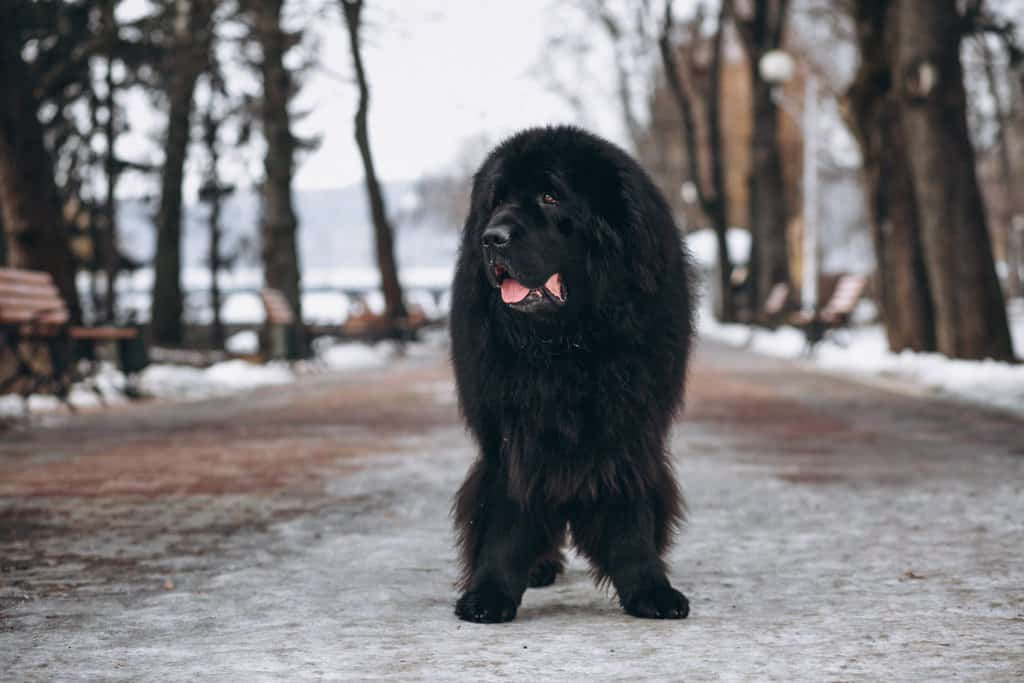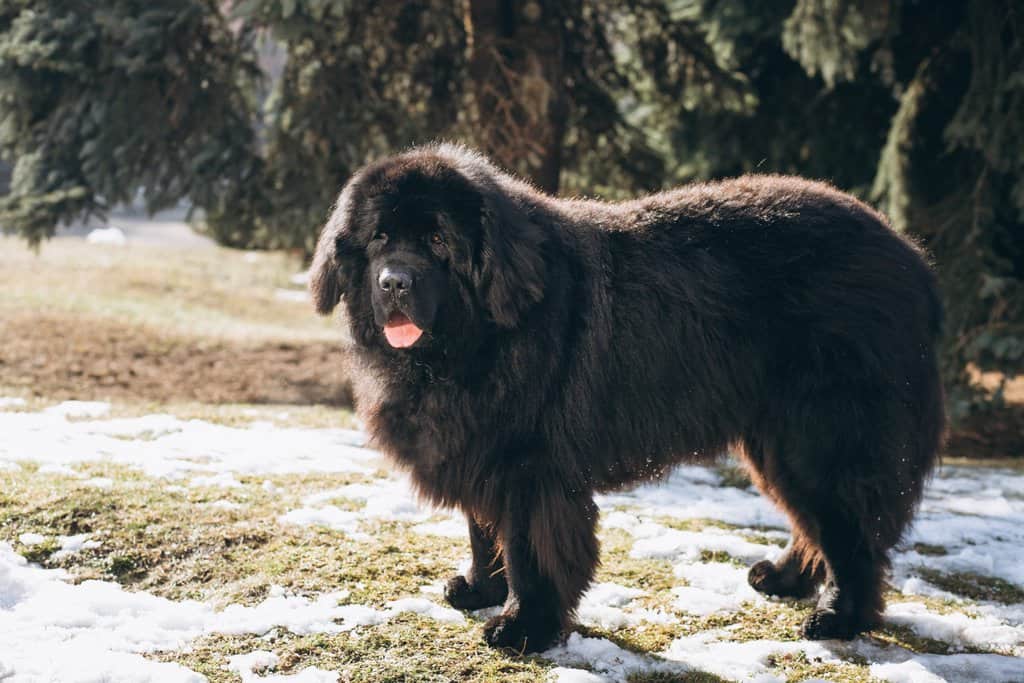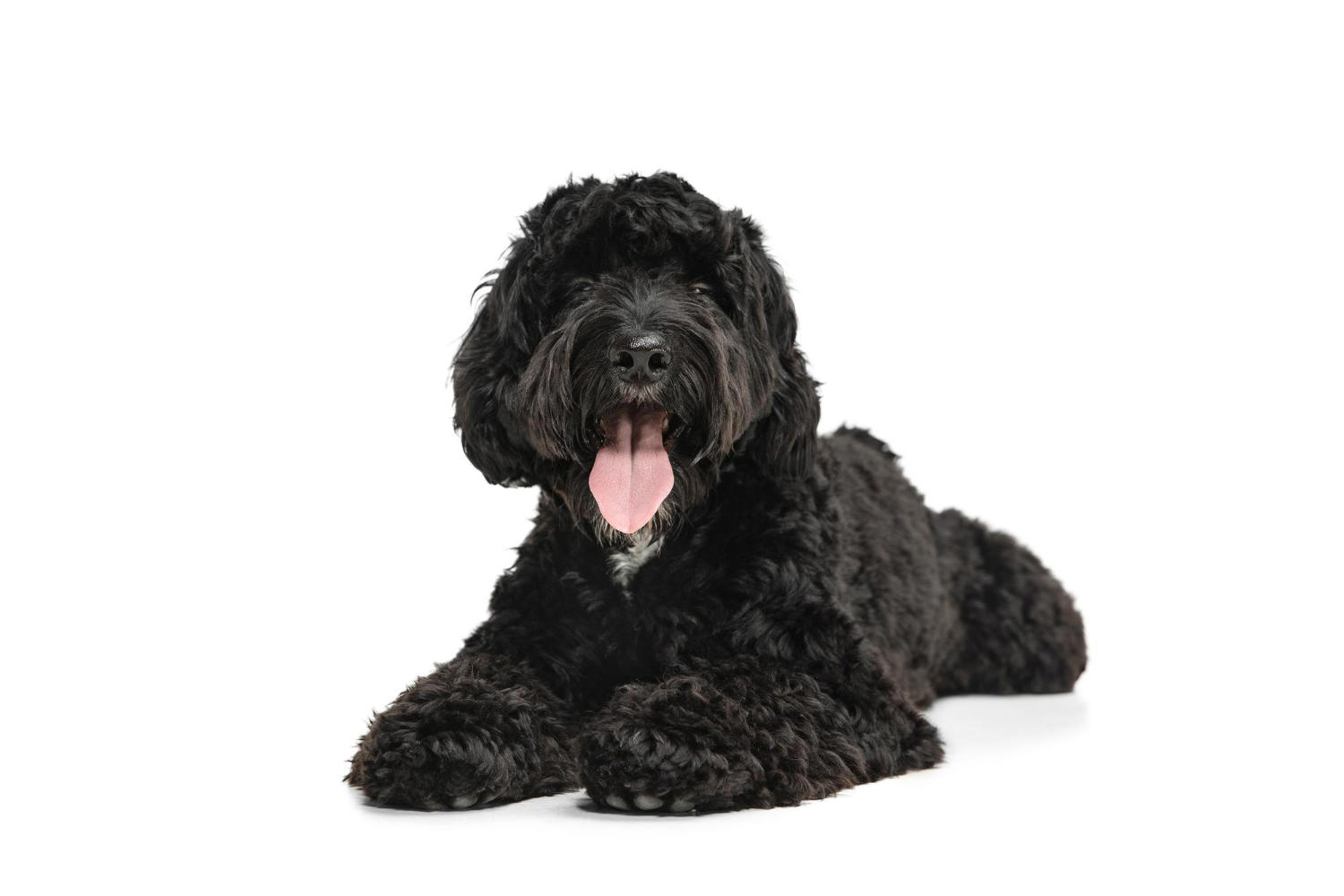The Newfoundland dog breed originated on the island of Newfoundland, located off the eastern coast of Canada. The breed’s exact origins are not known, but it is believed that they were developed from a mixture of European breeds and local dogs that were already present on the island.

One theory is that the breed is descended from the indigenous Indian dogs that were kept by the Beothuk people of Newfoundland. These dogs were said to be black, and they had a thick coat that helped them to survive in the cold and damp climate of the island. When European explorers and fishermen arrived in Newfoundland in the 16th century, they brought their own dogs with them, including the Great Pyrenees, the Mastiff, and the Portuguese Water Dog. These dogs were bred with the local Indian dogs to create the Newfoundland breed.
Another theory is that the breed was developed in Europe and brought to Newfoundland by fishermen and explorers. The ancestors of the Newfoundland may have been large, black dogs that were used for guarding and hunting in Europe. When these dogs were brought to Newfoundland, they were bred with the local Indian dogs to create the Newfoundland breed.
Regardless of their exact origins, it is clear that the Newfoundland breed was developed for their strength, endurance, and swimming ability. The breed was used by fishermen to help haul fishing nets and as rescue dogs for people who had fallen overboard. Their thick coat, webbed feet, and powerful swimming ability made them well-suited for this type of work.
Today, the Newfoundland breed is known for their gentle and loyal nature, as well as their versatility. They are used as therapy dogs, search and rescue dogs, and as family pets. They have also been used for working purposes, such as hauling carts and sleds.
How did Newfoundland dogs evolve over time?
The Newfoundland dog breed has evolved significantly over time, both in terms of their physical characteristics and their roles in society. Here is a detailed analysis of how the breed has evolved:
Physical Characteristics:
Coat: The Newfoundland has a thick, waterproof double coat that protects them from the cold and wet. Their coat can be black, brown, or white and black, and it requires regular grooming to keep it healthy and shiny.
Size: The Newfoundland is a large breed, with males typically weighing between 130 and 150 pounds and females weighing between 100 and 120 pounds.
Webbed Feet: The Newfoundland’s feet are webbed, which gives them increased swimming ability.
Head: The Newfoundland has a large, broad head with a thick muzzle and jowls.
Tail: The Newfoundland has a thick, powerful tail that is used for swimming and balance.
Roles in Society:
Fishing: The Newfoundland was originally bred for their strength and swimming ability, making them ideal for working with fishermen to haul fishing nets and as rescue dogs for people who had fallen overboard. They were also used to retrieve fishing gear that had fallen into the water.
Search and Rescue: The Newfoundland’s gentle nature and swimming ability make them well-suited for search and rescue work. They are used to search for missing people in the water and on land, and they have been known to save many lives in this capacity.
Working Dogs: Newfoundlands have been used for many other working purposes, including hauling carts and sleds. They have also been trained as service dogs for people with disabilities and as therapy dogs for people in hospitals and nursing homes.
Family Pets: Today, Newfoundlands are often kept as family pets. They are known for their gentle and loving nature, and they make excellent companions for children and adults alike.
Overall, the Newfoundland dog breed has evolved from a working dog used primarily for fishing and rescue work to a versatile breed that is used in many different capacities. They are known for their gentle nature, loyalty, and swimming ability, and they continue to be a beloved breed all over the world.
If you liked this article (or if it helped at all), leave a comment below or share it with friends, so they can also know What are the origins of the Newfoundland dog breed and how did they evolve over time?
Please follow us on Social Media




.jpg)

